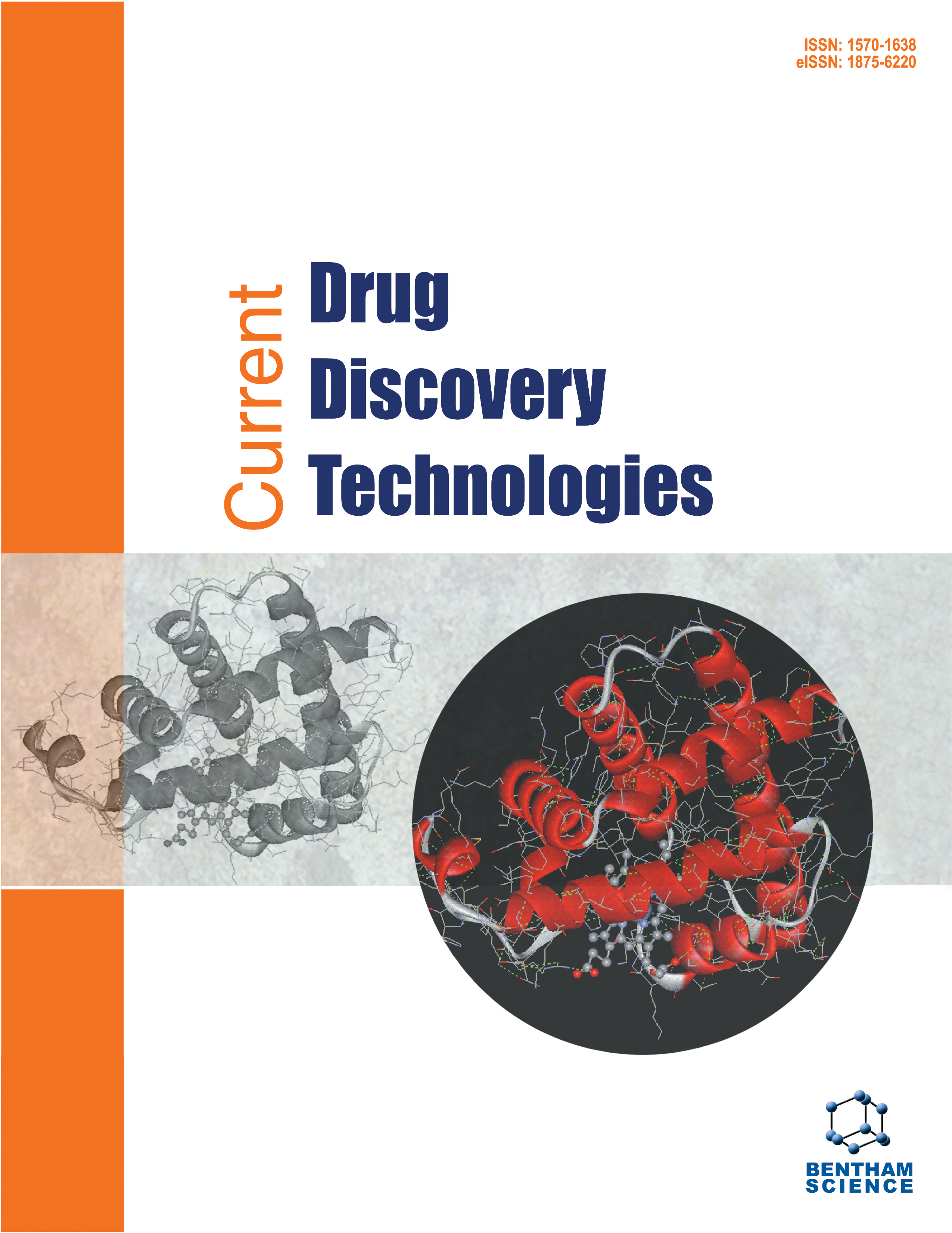- Home
- A-Z Publications
- Current Drug Discovery Technologies
- Previous Issues
- Volume 5, Issue 4, 2008
Current Drug Discovery Technologies - Volume 5, Issue 4, 2008
Volume 5, Issue 4, 2008
-
-
Ex Vivo and In Vivo Approaches to Study Mechanisms of Cardioprotection Targeting Ischemia/Reperfusion (I/R) Injury: Useful Techniques for Cardiovascular Drug Discovery
More LessThe last few decades have seen significant advancement in the therapy of Ischemic Heart Diseases (IHD). This is a direct outcome of the increasing knowledge of the molecular mechanisms involved during an ischemic insult of the myocardium. Even then there is still a major unmet need for better strategies or drug therapies to reduce ventricular remodeling and improve post-ischemic myocardial function. The ex-vivo isolate Read More
-
-
-
Mechanistic Systems Biology of Inflammatory Gene Expression in Airway Smooth Muscle as Tool for Asthma Drug Development
More LessBy Chi-Ming HaiThere is compelling evidence that airway smooth muscle cells may function as inflammatory cells in the airway system by producing multiple inflammatory cytokines in response to a large array of external stimuli such as acetylcholine, bradykinin, inflammatory cytokines, and toll-like receptor activators. However, how multiple extracellular stimuli interact in the regulation of inflammatory gene expression in an airway Read More
-
-
-
Potential Therapeutic Application of Chondroitin Sulfate/Dermatan Sulfate
More LessAuthors: Shuhei Yamada and Kazuyuki SugaharaGlycosaminoglycans (GAGs) are complex polysaccharides, which play important roles in cell growth, differentiation, morphogenesis, cell migration, and bacterial/viral infections. Major GAGs include heparin (Hep)/heparan sulfate, and chondroitin sulfate (CS)/dermatan sulfate (DS). Hep has been used for the treatment of thromboembolic disorders for more than 75 years, and has an established position in therapy today. CS/DS ha Read More
-
-
-
The Effect of Acute Hypoxia on Excitability in the Heart and the L-Type Calcium Channel as a Therapeutic Target
More LessAuthors: William A. Macdonald and Livia C. HoolAcute hypoxia is induced during coronary occlusion or when oxygen supply does not meet demand and can trigger cardiac arrhythmia. Cardiac ion channels shape the action potential and excitability of the heart. Acute hypoxia regulates the function of cardiac ion channels including the L-type Ca2+ channel that is the main route for Ca2+influx into cardiac myocytes and shapes the plateau phase of the action potential. This arti Read More
-
-
-
Bivalent Ligands as Specific Pharmacological Tools for G Protein-Coupled Receptor Dimers
More LessAuthors: Isabelle Berque-Bestel, Frank Lezoualc'h and Ralf JockersG protein-coupled receptors (GPCRs) are major drug targets and are organized in dimeric/oligomeric complexes. These dimers may be composed of identical (homodimer) or different (heterodimer) receptors. GPCR dimerization provides new opportunities for drug design. Different strategies have been developed to specifically target GPCR dimers. Bivalent ligands, which are composed of two functional pharmacophores linked Read More
-
-
-
The Osteogenic Differentiation of Adipose Tissue-Derived Precursor Cells in a 3D Scaffold/Matrix Environment
More LessThis paper details an in-vitro study using human adipose tissue-derived precursor/stem cells (ADSCs) in three-dimensional (3D) tissue culture systems. ADSCs from 3 donors were seeded onto NaOH-treated medical grade polycaprolactone-tricalcium phosphate (mPCL-TCP) scaffolds with two different matrix components; fibrin glue and lyophilized collagen. ADSCs within these scaffolds were then induced to differentiate alo Read More
-
-
-
Ultrasound Techniques for Drug Delivery in Cardiovascular Medicine
More LessAuthors: Luigi Landini, Maria F. Santarelli, Linda Landini and Vincenzo PositanoIn this review, we will give a critical update of published studies using ultrasound for targeted therapeutic use. We will briefly discuss the interaction mechanisms and their effects in non-invasive delivery of therapeutic agents. Moreover, the mechanisms by which ultrasonic contrast agents facilitate the delivery of drugs and genes into tissue will be discussed, together with recent applications and perspectives of targeted-mi Read More
-
-
-
New Drug Delivery Systems Based on Chitosan
More LessAuthors: Ines Panos, Niuris Acosta and Angeles HerasThe development of new delivery systems for the controlled release of drugs is one of the most interesting fields of research in pharmaceutical sciences. Microparticles can be used for the controlled release of drugs, vaccines, antibiotics, and hormones. To prevent the loss of encapsulated materials, the microcapsules should be coated with another polymer that forms a membrane on the surface. In addition there are sever Read More
-
Volumes & issues
-
Volume 22 (2025)
-
Volume 21 (2024)
-
Volume 20 (2023)
-
Volume 19 (2022)
-
Volume 18 (2021)
-
Volume 17 (2020)
-
Volume 16 (2019)
-
Volume 15 (2018)
-
Volume 14 (2017)
-
Volume 13 (2016)
-
Volume 12 (2015)
-
Volume 11 (2014)
-
Volume 10 (2013)
-
Volume 9 (2012)
-
Volume 8 (2011)
-
Volume 7 (2010)
-
Volume 6 (2009)
-
Volume 5 (2008)
-
Volume 4 (2007)
-
Volume 3 (2006)
-
Volume 2 (2005)
-
Volume 1 (2004)
Most Read This Month
Article
content/journals/cddt
Journal
10
5
false
en


